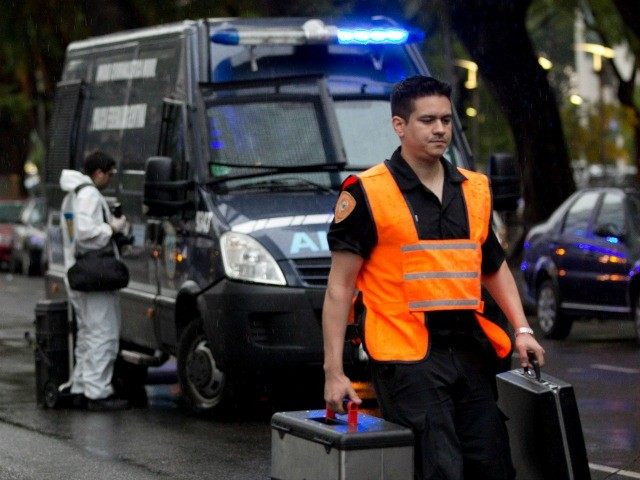As Argentine investigators attempt to uncover the mystery behind the death of prosecutor Alberto Nisman, a new wrinkle has appeared in the investigation: the body of an unidentified middle-aged woman, deposited and burnt across the street from Nisman’s apartment.
Neighbors called the police around 3 AM on Monday, citing a large fire that had been found in an electrical room at a power station. As the fire was near a power station, authorities expected to find an electrical fire, but instead found an unidentified body and a container labeled “ethyl alcohol,” indicating that the body had been deliberately set on fire.
Argentine newspaper Clarín reports that the woman’s body was found to be drenched in a combustible, and witnesses stated they did not hear any voices or signs of conflict, indicating that she may have already been dead when brought to the street across from Le Parc apartment complex that was once home to Nisman. Authorities first reported that the woman had been electrocuted, given her body’s proximity to the electrical station, but later recanted that hypothesis as the cause of death.
The Clarín reports police have proposed two hypotheses: that the woman set herself on fire, thus eliminating the possibility of conflict and explaining why neighbors did not hear any screams, or that she had been killed elsewhere and her body merely disposed at the location, perhaps to send a message. Authorities say it may take weeks to conduct DNA testing and identify both the woman and her cause of death.
In the interim, those involved in the investigation into Nisman’s death have expressed deep concern. Nisman was found with a gunshot wound in his forehead in his home on January 18, the day before he was to present before the Argentine Congress a report claiming that President Cristina Fernández de Kirchner had conspired with the Iranian government and Hezbollah to protect the terrorists responsible for the 1995 bombing of the Argentine-Israeli Mutual Association (AMIA), the deadliest terrorist attack in Argentina’s history. His death was initially ruled a suicide, but investigators later opened the case up for further investigation after Fernández de Kirchner herself said in a blog post she believed Nisman was killed by nefarious characters attempting to smear her name.
Prosecutors have since taken up Nisman’s mantle, and Fernández de Kirchner has been formally charged with working to protect known terrorists in order to secure favorable gas prices from the Islamic Republic of Iran. The President’s term concludes at the end of this year, and with it her possession of executive immunity. The Argentine court system must now determine whether they will pursue the case against Fernández de Kirchner and her Foreign Minister Héctor Timerman.
At least one witness involved in the Nisman investigation has said she is concerned for her safety and is demanding law enforcement issue her extra protection. Natalia Gimena Fernández was leaving her job as a waitress in the neighborhood the night Nisman was found dead. Having walked by the Le Parc complex, she claims police interviewed her, and during the process she observed a number of disturbing irregularities with the proceedings.
“When we were sitting at the stairs, they brought the stretcher and in that they took away the body [of Alberto Nisman]. It was like 3:30 am. He was wrapped up in a black sack. They took him to the right but 15 minutes later they put him back again and took him to the left,” she claims. The men, she claims, were laughing as they moved the body. She also claimed she was offered coffee which she was told was made in Nisman’s Nesspreso coffee pot.
Prosecutor Viviana Fein, who is in charge of the Nisman investigation and was identified as being on the scene by Fernández herself. has dismissed the young woman’s claims as “ridiculous” and rejected them as admissible evidence in the investigation. Nonetheless, Fernández tells Clarín that she fears for her safety: “I am scared and would like some type of protection. I live in fear.”

COMMENTS
Please let us know if you're having issues with commenting.